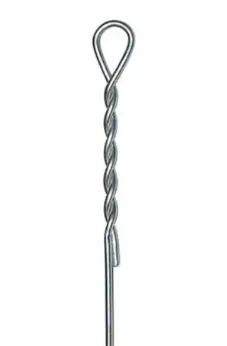-
 Phone:
Phone: -
 Email:
Email:

barbed wire chain link
The Evolution and Significance of Barbed Wire Chain Link Fencing
Barbed wire chain link fencing is one of the most effective and widely used security solutions in various settings, from agricultural lands to urban environments. This article explores the history, purpose, functionality, and advantages of using barbed wire in combination with chain link fences, highlighting its importance in modern security measures.
Historical Background
The invention of barbed wire in the late 19th century revolutionized fencing practices. Joseph Glidden is often credited with patenting the first practical barbed wire design in 1874, which consisted of sharp protrusions on a wire strand. It quickly gained popularity due to its ability to deter livestock from straying while being cost-effective and easy to install. As the American West expanded, barbed wire became synonymous with cattle ranching and territorial claims.
Chain link fencing, on the other hand, emerged in the early 20th century, primarily made from woven steel wire, creating a diamond pattern that provided visibility while maintaining strength. By combining these two elements—barbed wire and chain link fencing—users achieved a high level of security that has become essential in protecting property and ensuring safety.
Purpose and Functionality
The primary purpose of barbed wire chain link fencing is security. The sharp, pointed barbs serve as a physical barrier that discourages intruders from attempting to climb over the fence. When installed on top of chain link fences, barbed wire enhances the protective qualities of these structures, making them a popular choice for prisons, military installations, borders, and high-security commercial properties.
In addition to security, barbed wire chain link fences also provide a degree of privacy and delineation of space. Properties are clearly marked, preventing unauthorized access while allowing visibility to monitor activities within the enclosed area.
Advantages of Barbed Wire Chain Link Fencing
barbed wire chain link

1. Cost-Effectiveness Compared to solid walls or other fencing types made from materials such as wood or vinyl, barbed wire chain link fencing is relatively inexpensive. The cost savings are significant, especially for large properties requiring extensive perimeter coverage.
2. Durability Both barbed wire and chain link materials, typically galvanized steel or other treated metals, are resistant to corrosion and weathering. This durability leads to a long lifespan, reducing maintenance costs over time.
3. Ease of Installation Installing a barbed wire chain link fence is generally straightforward and can often be completed without professional help. With the right tools and materials, property owners can enhance their security effectively.
4. Versatility Barbed wire chain link fencing can be customized to suit various needs. Whether adding barbs at a specific height or utilizing different gauges of wire, this type of fencing can be adapted for agricultural, residential, or industrial purposes.
5. Low Maintenance Unlike wooden fencing that may require regular painting or treatment, barbed wire chain link fencing has minimal upkeep. Regular inspections for rust or damage are typically sufficient to maintain its integrity.
6. Visual Deterrent The sight of barbed wire can act as a psychological deterrent. Many potential intruders are likely to be discouraged by the presence of sharp barbs, thereby reducing the risk of trespassing or theft.
Conclusion
In summary, barbed wire chain link fencing represents a significant advancement in security solutions, combining the functionalities of both barbed wire and chain link materials. As the landscape of security continues to evolve with emerging threats, the need for effective deterrents has never been more critical. The unique benefits of this type of fencing—it’s cost-effectiveness, durability, ease of installation, and low maintenance—make it a favorable option for property owners seeking reliable protection. Whether for agricultural use, industrial sites, or residential properties, barbed wire chain link fencing remains a vital tool in safeguarding our spaces and ensuring peace of mind. As we move forward, the interplay of creativity and engineering will likely pave the way for innovations in fencing technologies that could further enhance security measures in the years to come.
-
Wire Mesh for Every Need: A Practical SolutionNewsJul.25,2025
-
Steel Fences: Durable, Secure, and Stylish OptionsNewsJul.25,2025
-
Roll Top Fencing: A Smart Solution for Safety and SecurityNewsJul.25,2025
-
Cattle Farm Fencing Solutions for Maximum SecurityNewsJul.25,2025
-
Affordable Iron Binding Wire SolutionsNewsJul.25,2025
-
Affordable Galvanized Wire SolutionsNewsJul.25,2025
-
Wire Hanger Recycling IdeasNewsJul.25,2025








